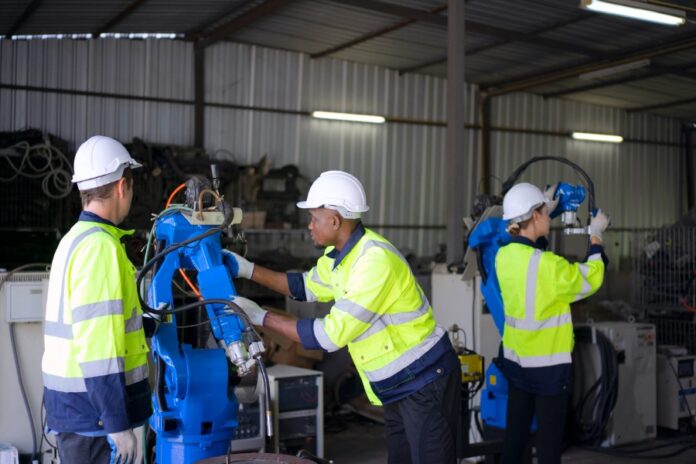
Jonathan Lau
Chief Operating Officer, InStride
Amid changing generational expectations about work, companies have struggled to retain younger workers. Debates around phrases like “quiet quitting” – and even “loud quitting” – have become pervasive. Many employers are left perplexed, asking themselves: What more can we do to engage and retain staff?
One effective response to the labor crisis – whether it’s the high number of job vacancies or the record turnover – has been to improve employee wellbeing and boost job satisfaction through investment in the employee’s career. Major companies from Amazon to Medtronic have started to offer employee perks like company-paid tuition for skills training and academic degrees. And the strategy seems to be working. In fact, Chipotle reported that workers who joined its tuition assistance program stayed with the company two times longer than the average.
It’s evident that at least part of the answer to the labor crisis lies in making additional investments in employee education and providing opportunities for upskilling, whether in the workplace or outside of it. Considering that 94% of employees say they would stay with a company longer if it invested in their professional skills development, workforce education benefits should be a default offering for any organization wishing to attract and retain top talent.
Structuring a Workforce Education Program

Employees recognize the advantages of workforce education and upskilling, and they are increasingly expecting employers to provide it. However, once employers catch on to the importance of investing in workplace education, it can be difficult to know where to begin. What information do companies need before they can implement a successful workforce education program?
First, companies must align workforce education with business needs. Employers should identify clear talent gaps in their organizations that they are looking to fill. By analyzing current job roles, vacancies and expected areas of headcount growth, companies can determine the necessary technical proficiencies. For many companies, this includes skills focused on cybersecurity, information technology and project management. However, every company has different needs and would therefore want to design a workforce education program that caters to those particular needs.
Employers typically aren’t prepared to offer this kind of comprehensive training system in-house. So, they will likely need to explore offerings from the workforce education market to evaluate partners who can provide an online education ecosystem on an easy-to-use, centralized platform. The platform should have direct billing relationships with academic partners, with the company covering the costs, to reduce barriers to access for employees. Transparent reporting and ROI tracking are also crucial to help employers measure success and make real-time adjustments to achieve their workforce goals.
Avoiding Common Mistakes
When implementing a workforce education system, companies often take an all-you-can-eat approach and inundate employees with short courses and limitless options, without any support to help them understand their path to advancement and career development. Success with these types of enormous and unfocused learning libraries is extremely low and they rarely generate measurable ROI for the employer.
Instead, the system should comprise a curated selection of courses and corresponding skills that match both the employer’s business goals and the personal goals of the employees. This should include valuable credentials that employees can use throughout the rest of their career, ranging from high school diplomas to graduate degrees and everything in between, depending on where the employee is in their learning journey.
Alongside that course breadth, companies should also provide clear guidance regarding career paths both inside and outside the company. The corresponding skills and progressions should be clear to the employee from the start, and easily accessible within the platform. After all, the goal is to help an employee further their career at their current employer.
These systems often include degrees at accredited universities, with tuition covered by the employer. This may seem like a significant expense, but when you consider the amount of money that companies spend on training new employees versus retaining current ones, the investment is easily justifiable. One study found that reskilling instead of hiring could save companies $60,000 per employee.
One major consideration across all of these training goals is accessibility. Employees need to be able to gain access to these learning systems from anywhere and at whatever time suits them. This is particularly important for employees from underrepresented backgrounds, as they could be juggling more than one job as well as family commitments. So, it’s crucial that these employees be able to fit the training into their schedules in a way that makes it easy for them.
Technical Skills
One area of reskilling that employees frequently raise covers mastering new and emerging technologies. Employees want to gain marketable skills and not fall behind as technology rapidly advances. There are good reasons for this as hiring managers are increasingly looking for employees capable of using novel technologies. In fact, some 56% of hiring managers anticipate that technologies like AI and automation will change the skills their employees need at work.
Even if a workplace doesn’t utilize AI and related tools yet, learning to use them is a valuable skill for a company’s employees and a skill all companies are likely to call upon in the near future. It’s also pretty clear that reskilling current employees is cheaper than finding new ones, so it’s in the employer’s best interest to continually offer training, ensuring their workforce’s skills are relevant and updated.
Final Thoughts
In today’s dynamic workforce landscape, engaging and retaining staff hinges on investing in their career development. Companies that embrace workforce education and upskilling are witnessing not only increased job satisfaction but also extended employee tenure and cost savings. In this ever-changing work environment, investing in employee education isn’t just a perk, but a strategy for organizations aiming to attract and retain top talent.
As the chief operating officer of InStride, Jonathan Lau develops and delivers a comprehensive workforce education offering for enterprise corporations and oversees InStride’s technology, product, customer success and academic partnerships functions.
Image: iStock













